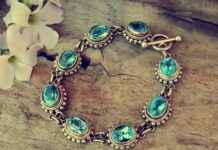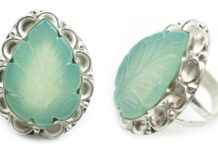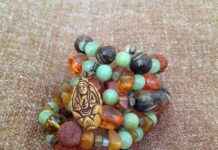This article delves into the distinctive qualities of handmade jewelry, offering a comprehensive comparison with mass-produced alternatives. We will explore various aspects such as craftsmanship, personal connection, and sustainability, highlighting the reasons why handmade jewelry occupies a unique niche in the market.
The Art of Craftsmanship
Handmade jewelry is a testament to exceptional craftsmanship. Each piece is created with meticulous attention to detail, showcasing the skill and dedication of the artisan. Unlike mass-produced items, which often lack individuality, handmade pieces feature unique designs that reflect the artisan’s vision and creativity.
Unique Designs and Personalization
A defining characteristic of handmade jewelry is its uniqueness. Artisans offer customization options, allowing customers to create pieces that resonate with their personal style and story. This level of personalization fosters a deeper connection between the wearer and the jewelry.
The Story Behind Each Piece
Handmade jewelry often carries a narrative that enriches its emotional value. Understanding the story behind a piece can create a profound connection for the wearer, transforming it from a mere accessory into a cherished item.
Quality Materials and Sustainability
Artisans frequently utilize high-quality, ethically sourced materials in their creations. This commitment to sustainability not only enhances the durability of the jewelry but also promotes responsible practices within the industry, making each piece a conscious choice for consumers.
Supporting Local Artisans and Communities
Purchasing handmade jewelry supports local artisans and their communities, fostering creativity and preserving traditional crafting techniques. This economic support is vital for sustaining the livelihoods of artisans and keeping cultural heritage alive.
Emotional Value and Sentimental Gifts
Handmade jewelry is often chosen for its emotional significance. Gifting a unique piece can convey deep feelings, making it a cherished item for the recipient. Many opt for handmade jewelry to commemorate special occasions, ensuring that these pieces become treasured heirlooms passed down through generations.
Conclusion: The Lasting Appeal of Handmade Jewelry
In conclusion, handmade jewelry offers distinct advantages over mass-produced pieces, including unparalleled craftsmanship, personalization, and emotional value. Its unique qualities make it a meaningful choice for both wearers and gift-givers, solidifying its place in the jewelry market.

The Art of Craftsmanship
Handmade jewelry is a true testament to the skill and dedication of artisans, who pour their heart and soul into every piece they create. Unlike mass-produced items, each handcrafted piece showcases exceptional craftsmanship that is both intricate and unique. The meticulous attention to detail ensures that no two pieces are alike, offering a level of individuality that mass production simply cannot achieve.
Artisans often spend countless hours perfecting their craft, using traditional techniques passed down through generations. This dedication not only enhances the quality of the jewelry but also imbues each piece with a sense of history and character. The materials used in handmade jewelry are often sourced from local suppliers, ensuring that artisans can maintain a high standard of quality while supporting their communities.
- Skill Development: Artisans continuously refine their techniques, learning new methods and styles to enhance their work.
- Attention to Detail: Each piece is carefully crafted, with a focus on the smallest details that make a significant difference.
- Personal Touch: Many artisans incorporate their personal style and story into their designs, making each piece unique.
Moreover, the story behind each piece adds emotional value, creating a deeper connection between the jewelry and its wearer. Understanding the inspiration and effort that went into crafting a piece can transform it from a simple accessory into a cherished item.
In conclusion, the art of craftsmanship in handmade jewelry not only highlights the skill and dedication of artisans but also promotes a sustainable and ethical approach to jewelry making. By choosing handmade pieces, consumers support local artisans and contribute to the preservation of traditional crafting techniques.
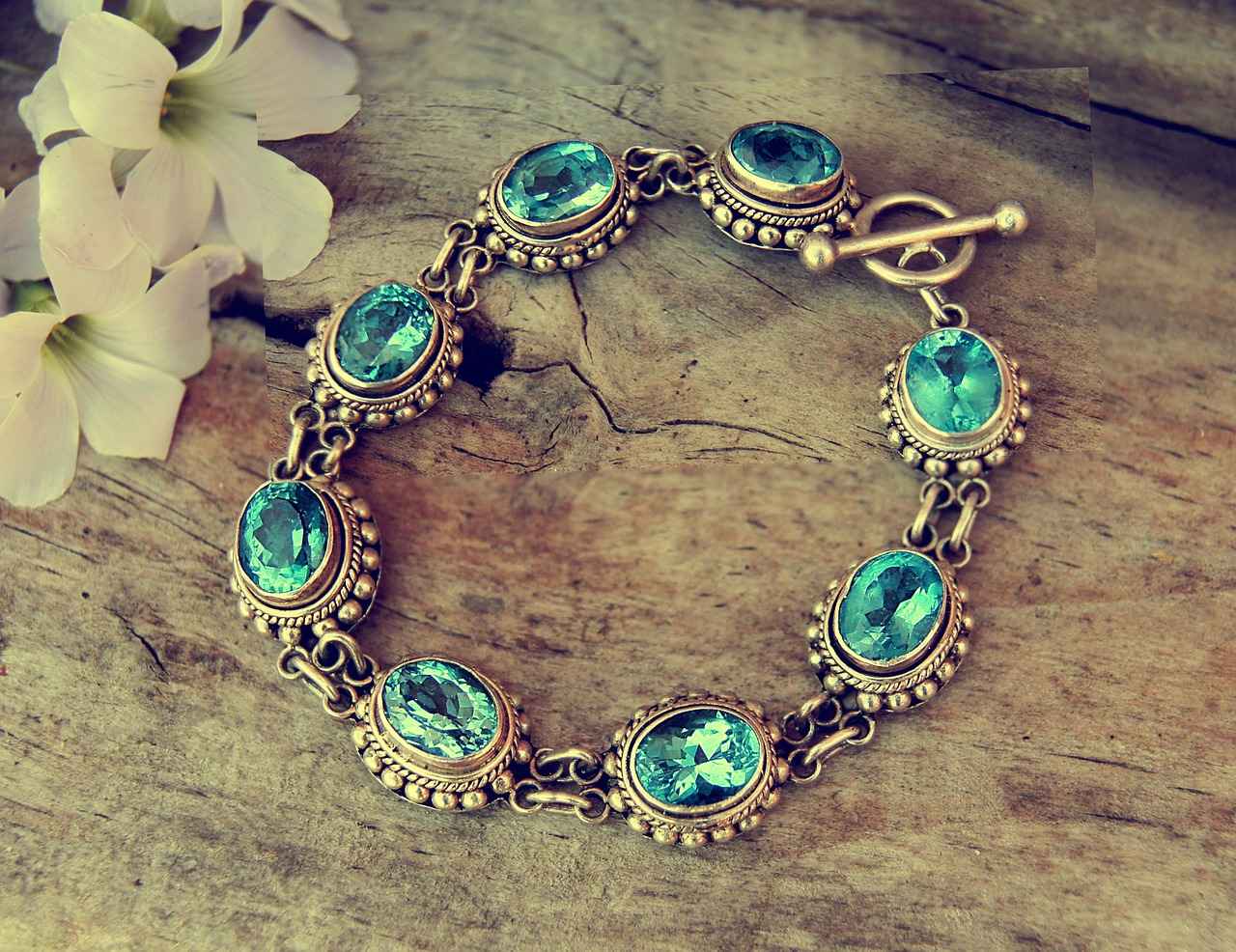
Unique Designs and Personalization
are among the most compelling aspects of handmade jewelry, setting it apart from mass-produced alternatives. Each piece is a testament to the artisan’s creativity and skill, reflecting a story that is uniquely its own. This article explores the significance of these unique designs and the personalization options available in handmade jewelry.
One of the most remarkable features of handmade jewelry is its uniqueness. Unlike mass-produced items, which often follow trends and templates, handmade pieces are crafted with individual attention. Artisans pour their heart and soul into each creation, resulting in designs that are not only visually stunning but also deeply personal.
Customization Options play a pivotal role in the appeal of handmade jewelry. Many artisans offer clients the chance to customize their pieces, allowing them to select materials, colors, and even design elements that resonate with their personal style. This process transforms jewelry into a personal statement, reflecting the wearer’s tastes and experiences.
| Customization Options | Description |
|---|---|
| Material Selection | Choose from a variety of metals, gemstones, and other materials. |
| Design Elements | Incorporate specific symbols or motifs that hold personal significance. |
| Size and Fit | Ensure the piece fits perfectly, whether it’s a ring, bracelet, or necklace. |
Moreover, the story behind each piece adds an emotional layer that mass-produced jewelry often lacks. When customers collaborate with artisans, they engage in a creative process that can lead to a deeper connection with the final product. This narrative aspect transforms jewelry from a mere accessory into a cherished keepsake.
In conclusion, the uniqueness and personalization available in handmade jewelry not only highlight the artisan’s skill but also create a profound bond between the piece and its wearer. By choosing handmade, individuals celebrate their identity and values, making each piece a true reflection of themselves.
The Story Behind Each Piece
Handmade jewelry is not just about aesthetic appeal; it is often imbued with rich narratives that enhance its emotional value. Each piece tells a story, whether it is inspired by the artisan’s personal journey, cultural heritage, or the natural world. This narrative aspect transforms the jewelry from a mere accessory into a symbol of connection and significance.
When a wearer understands the story behind their jewelry, it fosters a deeper relationship with the piece. For instance, a necklace crafted from sea glass may represent the artisan’s love for the ocean, while a ring featuring a unique gemstone could symbolize a significant life event. Such stories resonate on a personal level, allowing wearers to feel a sense of pride and connection.
Moreover, many artisans are open to sharing their creative processes and inspirations. This transparency allows customers to appreciate the thought and effort that goes into each piece. By learning about the artisan’s background, clients can feel more connected to the craftsmanship and the values it represents. This connection often leads to a greater appreciation for handmade jewelry, as it becomes a reflection of personal stories and shared experiences.
Additionally, the collaborative nature of creating custom pieces enhances this narrative. Artisans often work closely with clients to design jewelry that reflects their individual stories and preferences. This partnership not only results in a unique creation but also deepens the emotional bond between the artisan and the client.
In conclusion, the stories behind handmade jewelry significantly contribute to its emotional value. Understanding these narratives transforms the experience of wearing jewelry into something profound, making it much more than just an accessory. Instead, it becomes a cherished piece of art that carries personal significance and memories.
Artisan Backgrounds and Inspirations
play a pivotal role in the creation of handmade jewelry, influencing both design and craftsmanship. Each artisan brings a unique story to their work, often shaped by their cultural heritage, personal experiences, and the natural world around them. This rich tapestry of influences not only enhances the aesthetic appeal of each piece but also imbues it with a deeper meaning.
Many artisans draw inspiration from their cultural backgrounds. For instance, jewelers from different regions often incorporate traditional patterns, symbols, and techniques that reflect their heritage. This connection to culture not only preserves ancient crafting methods but also tells a story that resonates with wearers who appreciate the history behind their jewelry.
In addition to cultural influences, personal experiences significantly shape an artisan’s work. Life events, relationships, and individual journeys can inspire unique designs that express emotions and memories. For example, an artisan might create a piece that symbolizes resilience or love, making it a deeply personal creation for the wearer.
Nature also serves as a profound source of inspiration for many jewelers. The colors, textures, and forms found in the natural world often translate into stunning jewelry designs. From the vibrant hues of gemstones to the organic shapes of leaves and flowers, nature’s beauty can be mirrored in the artistry of handmade pieces.
Furthermore, the process of crafting jewelry is often collaborative. Artisans frequently engage with their clients, allowing for a fusion of ideas and inspirations. This collaboration not only results in a piece that reflects the client’s vision but also enriches the artisan’s creative process, leading to innovative designs that might not have emerged in isolation.
In conclusion, the backgrounds and inspirations of artisans are integral to the handmade jewelry design process. By drawing from cultural heritage, personal experiences, and nature, artisans create pieces that are not just accessories, but meaningful expressions of art and identity.
Custom Requests and Client Collaboration
in the world of handmade jewelry play a pivotal role in transforming abstract ideas into tangible art. Artisans understand that their creations are not merely objects; they are personal expressions of the clients’ identities, stories, and emotions. This collaborative process is what sets handmade jewelry apart from mass-produced alternatives.
When clients approach artisans, they often bring with them a vision or a specific concept they wish to realize. This initial interaction is crucial, as it allows artisans to grasp the essence of what the client desires. Through open communication, artisans can ask questions that help refine the design, ensuring that every detail aligns with the client’s expectations. This level of engagement fosters a sense of trust and partnership between the artisan and the client.
- Understanding Client Needs: Artisans take the time to listen to their clients, understanding their preferences, inspirations, and the emotions they wish to convey through their jewelry.
- Creating Unique Designs: With the insights gained from discussions, artisans can craft unique pieces that are custom-tailored to reflect the client’s personality. Each design becomes a one-of-a-kind masterpiece.
- Iterative Feedback Process: Many artisans encourage clients to provide feedback during the creation process. This iterative approach allows for adjustments and enhancements, ensuring the final product exceeds expectations.
Moreover, the collaborative nature of this process often results in a deeper emotional connection to the piece. Clients feel a sense of ownership and pride in their custom jewelry, knowing that it embodies their vision and values. This emotional investment transforms the jewelry into more than just an accessory; it becomes a cherished symbol of personal significance.
In conclusion, the collaboration between artisans and clients is a fundamental aspect of creating handmade jewelry. It not only ensures that the final product aligns with the client’s desires but also enriches the overall experience, making it a memorable journey for both parties involved.
Quality Materials and Sustainability
Handmade jewelry is renowned for its commitment to using high-quality, ethically sourced materials. This dedication not only enhances the overall durability of the pieces but also plays a crucial role in promoting sustainable practices within the jewelry industry. Unlike mass-produced jewelry, which often relies on cheaper materials and unethical sourcing methods, handmade artisans prioritize the integrity of their materials.
Artisans often select materials that are not only beautiful but also responsibly obtained. This may include recycled metals, ethically mined gemstones, and sustainable materials like wood or organic fibers. By choosing these materials, artisans contribute to a reduced environmental impact, encouraging a more sustainable approach to jewelry-making.
Furthermore, the use of ethically sourced materials fosters a sense of trust and transparency. Consumers today are increasingly aware of the origins of the products they purchase. By opting for handmade jewelry, they can be confident that their choices align with their values of sustainability and ethical consumerism.
In addition to the materials themselves, the processes involved in creating handmade jewelry often reflect sustainable practices. Many artisans utilize low-impact techniques that minimize waste and energy consumption. This stands in stark contrast to mass production, which frequently results in significant waste and environmental degradation.
Moreover, supporting handmade jewelry means supporting local artisans and their communities. This economic support not only helps preserve traditional crafting techniques but also fosters creativity and innovation within local economies. As artisans thrive, they can continue to source materials responsibly and contribute to a more sustainable future.
In conclusion, the emphasis on quality materials and sustainability in handmade jewelry is a vital aspect that distinguishes it from mass-produced alternatives. By choosing handmade, consumers not only acquire unique, durable pieces but also support ethical practices that benefit both the environment and local communities.
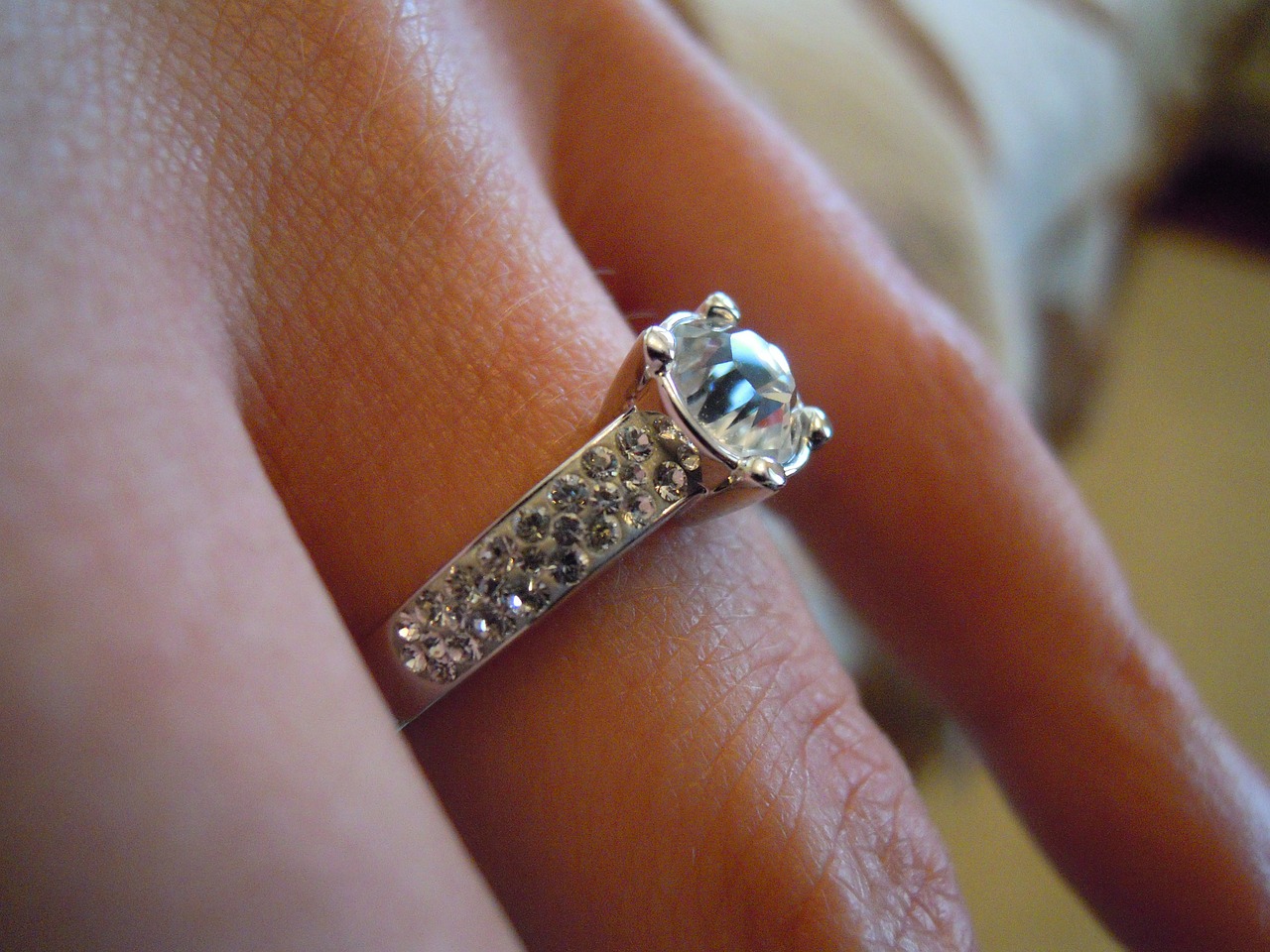
Supporting Local Artisans and Communities
Purchasing handmade jewelry is not just about acquiring a unique accessory; it is also a powerful way to support local artisans and their communities. By choosing handmade over mass-produced items, consumers contribute to the economic stability of artisans, allowing them to thrive and continue their craft.
The act of buying handmade jewelry fosters a sense of community and encourages the preservation of traditional crafting techniques. Many artisans rely on their skills to make a living, and when consumers choose to purchase from them, they are directly impacting the livelihoods of these talented individuals. This economic support helps to keep local traditions alive, ensuring that unique skills are passed down through generations.
- Encouraging Creativity: Local artisans are often inspired by their surroundings, culture, and personal experiences. By purchasing their jewelry, customers help to promote creativity and innovation within the community.
- Preserving Craftsmanship: Traditional techniques that have been honed over centuries may be at risk of fading away. Supporting artisans helps to keep these methods alive, ensuring that future generations can appreciate and learn them.
- Building Community Connections: Buying handmade jewelry creates a bond between the consumer and the artisan. This relationship can lead to a greater appreciation for the work that goes into each piece, fostering loyalty and support for local businesses.
Furthermore, the impact of ethical consumerism cannot be overstated. As more individuals become aware of the benefits of supporting local artisans, there is a growing demand for sustainable and ethically made products. This shift not only benefits the artisans but also contributes to a more responsible marketplace that values quality over quantity.
In conclusion, by choosing to purchase handmade jewelry, consumers play a vital role in supporting local artisans and their communities. This choice not only helps preserve traditional crafting techniques but also fosters creativity and strengthens community ties. Embracing handmade jewelry is a step towards a more sustainable and ethical approach to consumerism.
The Impact of Ethical Consumerism
has become a significant factor in shaping modern purchasing behaviors. As consumers grow more conscious of the implications behind their buying choices, they are increasingly seeking products that reflect their values. This shift in mindset is particularly evident in the jewelry market, where the demand for handmade pieces is on the rise.
Handmade jewelry not only represents unique artistry but also embodies the principles of sustainability and fair trade. By choosing handmade items, consumers support ethical practices that prioritize the welfare of artisans and the environment. This conscious decision-making process is a reflection of a broader trend towards ethical consumerism, which encourages individuals to consider the origins and impact of their purchases.
- Supporting Local Artisans: Purchasing handmade jewelry often means supporting local artisans who rely on their craft for their livelihood. This economic support fosters community growth and helps preserve traditional skills.
- Environmental Sustainability: Many artisans use eco-friendly materials and practices in their work. By opting for handmade jewelry, consumers contribute to a reduction in environmental harm compared to mass-produced alternatives.
- Transparency and Fair Trade: Ethical consumerism emphasizes the importance of transparency in the supply chain. Handmade jewelry often comes with a story that highlights the fair treatment of workers and the sourcing of materials.
Moreover, the emotional connection associated with handmade jewelry enhances its appeal. Each piece carries a story, often reflecting the artisan’s background and inspiration. This narrative fosters a deeper connection between the consumer and the product, making the purchase feel more meaningful.
In conclusion, the impact of ethical consumerism is reshaping the jewelry industry. By choosing handmade jewelry, consumers not only acquire unique pieces but also actively participate in promoting sustainability, supporting local economies, and fostering fair trade practices. This shift towards ethical purchasing is not just a trend; it represents a fundamental change in how we view our buying habits and their consequences.
Building Relationships with Artisans
is a vital aspect of the handmade jewelry experience. When consumers choose to purchase from artisans, they are not merely buying a product; they are engaging in a meaningful exchange that fosters a deep connection between the maker and the buyer. This connection enhances the overall experience and creates a sense of loyalty that is often absent in mass-produced items.
Artisans invest their time, passion, and creativity into each piece they create. This level of dedication is evident in the quality and uniqueness of the jewelry, which often tells a story of its own. When consumers learn about the artisan’s journey, their techniques, and the inspiration behind the designs, it adds an emotional layer to the purchase. This narrative transforms the jewelry from a simple accessory into a cherished keepsake.
Moreover, the personal interaction between the artisan and the consumer can lead to customized pieces that truly reflect the buyer’s personality and preferences. Many artisans welcome feedback and collaborate closely with clients to turn their visions into reality. This collaborative process not only results in a one-of-a-kind piece but also strengthens the bond between the artisan and the consumer.
As consumers become more aware of the impact of their purchasing decisions, they often seek out artisans who share their values regarding sustainability and ethical practices. Supporting local artisans not only promotes economic growth within communities but also helps preserve traditional crafting techniques. This conscious consumerism fosters a sense of responsibility and connection that extends beyond the transaction.
In conclusion, building relationships with artisans enriches the experience of purchasing handmade jewelry. It creates a personal connection that enhances customer loyalty and appreciation for the craft. As consumers increasingly prioritize these connections, the handmade jewelry market continues to thrive, celebrating the artistry and dedication of skilled makers.
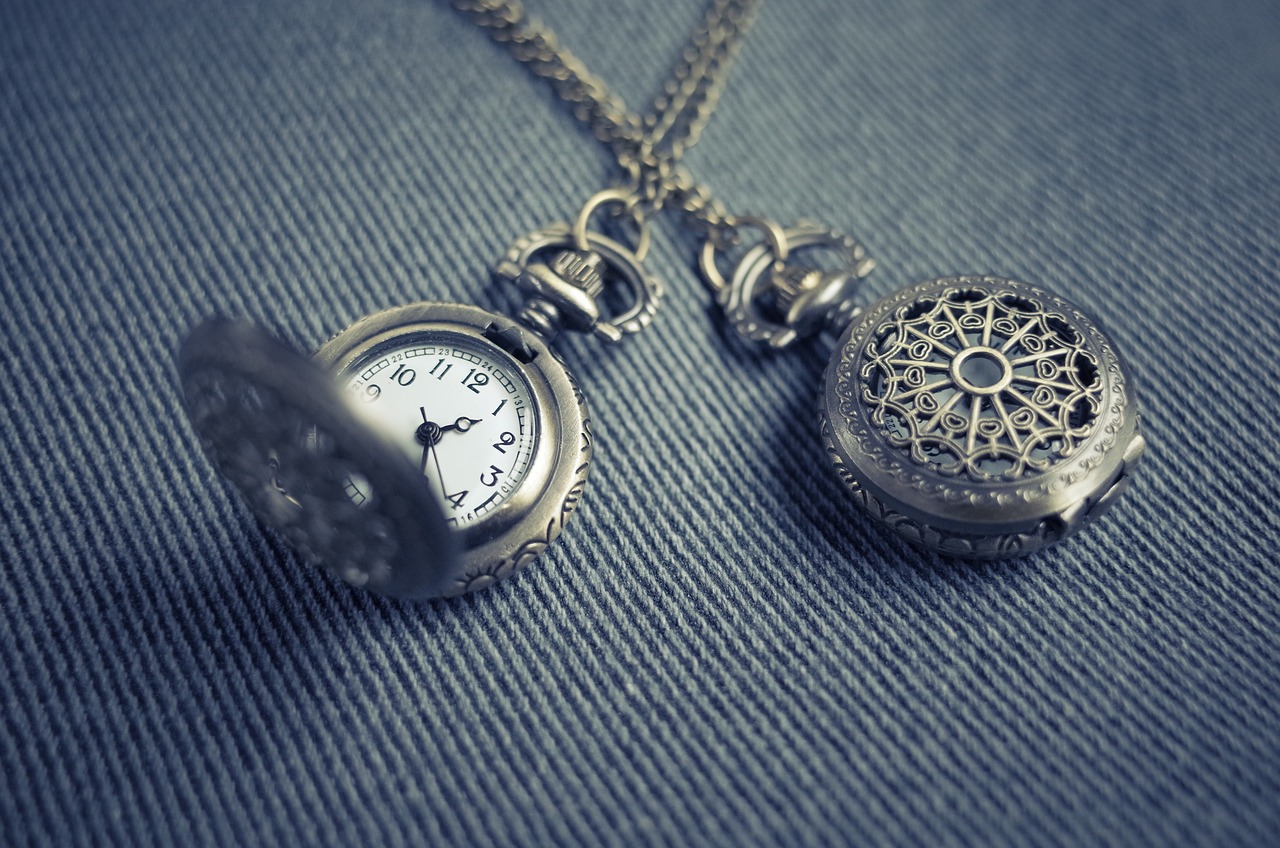
Emotional Value and Sentimental Gifts
Handmade jewelry holds a special place in the hearts of many, primarily due to its emotional significance. When selecting a gift, the intention behind the choice often carries more weight than the item itself. A unique piece of jewelry can serve as a powerful symbol of love, friendship, or appreciation, making it a cherished item for the recipient.
- Memorable Occasions and Milestones: Many individuals choose handmade jewelry to commemorate significant life events. Whether it’s a wedding, anniversary, or graduation, these pieces often become treasured heirlooms. Each time the recipient wears the jewelry, they are reminded of the special moment it represents.
- Personalized Gifts for Loved Ones: One of the most appealing aspects of handmade jewelry is the ability to customize it. Artisans often work closely with clients to create unique designs that reflect the recipient’s personality and taste. This thoughtful approach adds a layer of meaning that mass-produced items simply cannot replicate.
- Connection to the Artisan: Knowing the story behind the jewelry can enhance its emotional value. When a piece is crafted by a skilled artisan, understanding their background and inspiration can create a deeper connection for the wearer. This relationship between the maker and the wearer adds an intimate layer to the gift.
- Symbolism and Sentiment: Handmade jewelry often incorporates symbols or motifs that hold personal significance. Whether it’s a birthstone representing a loved one or a charm that signifies a shared memory, these elements can transform a simple piece into a heartfelt gift.
In conclusion, the emotional value of handmade jewelry makes it an exceptional choice for sentimental gifts. By opting for unique, personalized pieces, givers can convey deep feelings and create lasting memories that resonate far beyond the initial moment of gifting.
Memorable Occasions and Milestones
Handmade jewelry holds a special significance for many individuals, particularly when it comes to commemorating memorable occasions and milestones. Whether it’s a wedding, anniversary, or a significant birthday, these unique pieces often serve as a tangible reminder of cherished moments in life.
One of the most compelling reasons people choose handmade jewelry for these occasions is the emotional connection it fosters. Unlike mass-produced items, each handmade piece carries a story, often reflecting the personal journey of the wearer or the giver. This narrative adds layers of meaning, transforming the jewelry into a sentimental treasure.
- Weddings: For couples, selecting handmade rings or wedding bands can symbolize their unique love story. Artisans can customize these pieces to incorporate elements that are meaningful to the couple, such as birthstones or engravings, making them truly one-of-a-kind.
- Anniversaries: Gifting handmade jewelry on anniversaries is a popular tradition. These pieces can be designed to reflect the years spent together, celebrating milestones with personalized features that evoke shared memories.
- Birthdays: A handmade piece can be a perfect gift for a loved one’s birthday, especially when it’s tailored to their preferences. Customization options allow for a thoughtful gift that resonates with the recipient’s style and personality.
Moreover, these pieces often become treasured heirlooms that can be passed down through generations. Families can create a legacy of love and memories, as each piece tells a story that connects past, present, and future.
In conclusion, choosing handmade jewelry for memorable occasions not only enhances the significance of the event but also creates lasting bonds between individuals. It’s a beautiful way to honor life’s milestones and celebrate the journey shared with loved ones.
Personalized Gifts for Loved Ones
When it comes to finding the perfect gift for a loved one, personalization can make all the difference. Handmade jewelry offers a unique opportunity to create a piece that is not only beautiful but also deeply meaningful. Unlike mass-produced items, which often lack character and connection, handmade jewelry allows for a level of customization that truly reflects the recipient’s personality and preferences.
One of the most appealing aspects of handmade jewelry is the ability to tailor designs to suit individual tastes. Artisans often work closely with clients, ensuring that each piece is a true reflection of the recipient’s style. This collaboration can involve selecting specific materials, colors, and designs that resonate with the individual. For example, a necklace can be designed with the recipient’s birthstone, or a bracelet can feature charms that symbolize significant memories shared between the giver and the receiver.
Furthermore, the emotional value attached to personalized gifts is unparalleled. A piece of jewelry that has been thoughtfully customized can convey feelings of love, appreciation, and thoughtfulness. It transforms a simple gift into a cherished keepsake, often becoming a treasured heirloom that can be passed down through generations. The story behind the piece, including the inspiration for its design and the care taken in its creation, adds layers of significance that mass-produced items simply cannot match.
In addition to emotional connections, choosing handmade jewelry supports local artisans and their communities. This conscious decision not only fosters creativity but also helps preserve traditional crafting techniques that may be at risk of fading away in a world dominated by mass production.
In conclusion, handmade jewelry stands out as an ideal choice for personalized gifts. Its customizable options, emotional significance, and support for local artisans create a meaningful experience for both the giver and the recipient. When you choose a piece of handmade jewelry, you are not just giving a gift; you are sharing a story, a connection, and a lasting memory.
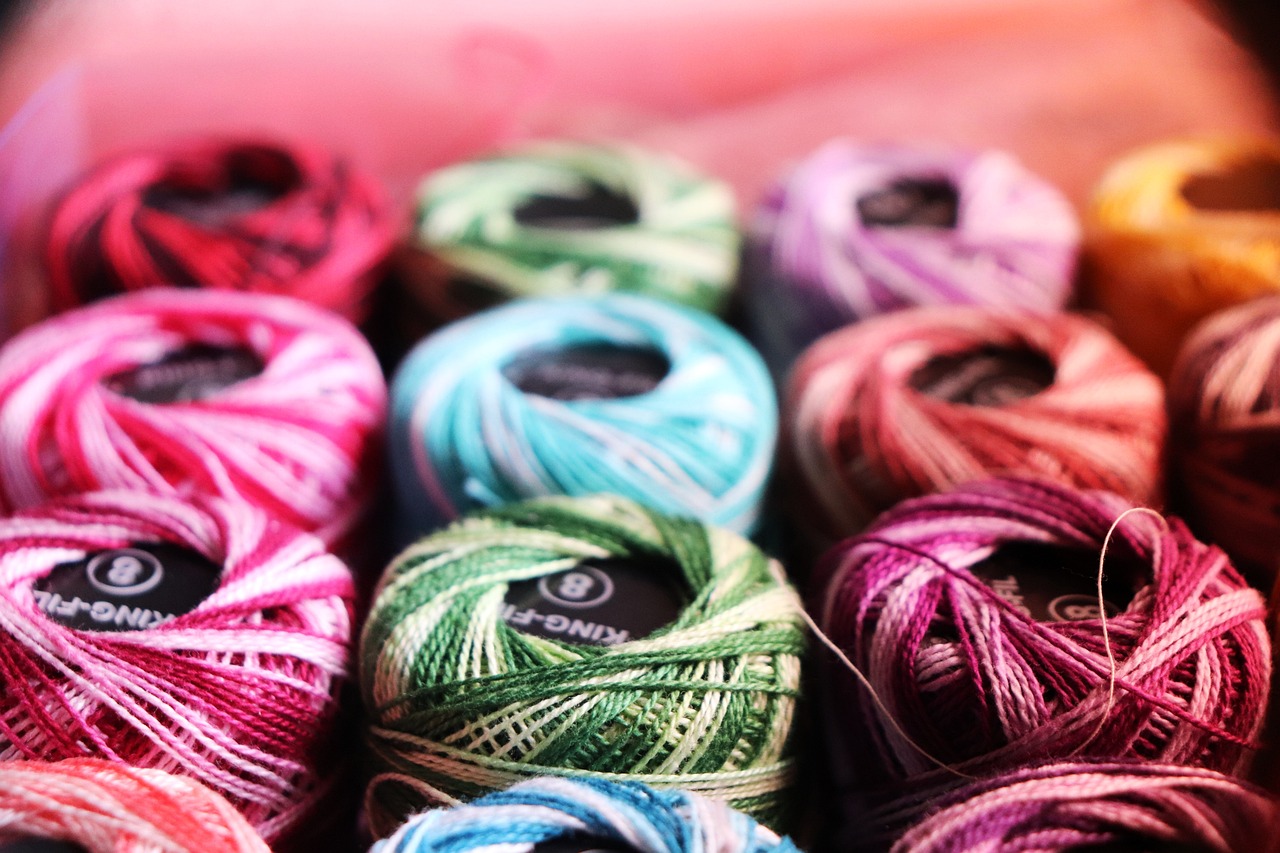
Conclusion: The Lasting Appeal of Handmade Jewelry
Why Handmade Jewelry is More Special than Mass-Produced Pieces
Handmade jewelry stands out in the world of adornments for several compelling reasons. Unlike mass-produced items, which often prioritize quantity over quality, handmade pieces embody a level of craftsmanship that is both rare and valuable. This article explores the unique qualities of handmade jewelry, emphasizing its significance in terms of craftsmanship, personal connection, sustainability, and emotional value.
The Art of Craftsmanship
Handmade jewelry is a testament to the skill and dedication of artisans. Each piece is crafted with meticulous attention to detail, resulting in designs that are not only unique but also tell a story. The craftsmanship involved ensures that every item is a work of art, setting it apart from the uniformity of mass-produced jewelry.
Unique Designs and Personalization
One of the most appealing aspects of handmade jewelry is its uniqueness. Artisans often provide customization options, allowing customers to create pieces that reflect their personal style and narrative. This level of personalization transforms jewelry into a meaningful expression of identity.
The Story Behind Each Piece
Every handmade piece often carries a narrative that adds emotional value. Understanding the story behind a piece can foster a deeper connection for the wearer, making it more than just an accessory; it becomes a cherished memory.
Supporting Local Artisans and Communities
When you choose handmade jewelry, you are also supporting local artisans and their communities. This economic support not only sustains creativity but also helps preserve traditional crafting techniques that might otherwise fade away. By purchasing handmade, you contribute to a sustainable future for these artisans.
Emotional Value and Sentimental Gifts
Handmade jewelry is often chosen for its emotional significance. Gifting a unique piece can convey deep feelings, making it a cherished item for the recipient. Many people opt for handmade jewelry to commemorate special occasions, ensuring that these pieces become treasured heirlooms passed down through generations.
In conclusion, handmade jewelry offers distinct advantages over mass-produced pieces, including exceptional craftsmanship, personalization, and profound emotional value. Its unique qualities make it a meaningful choice for both wearers and gift-givers, ensuring that each piece is not just an accessory but a treasured story.
Frequently Asked Questions
- What makes handmade jewelry unique?
Handmade jewelry is unique because each piece is crafted by skilled artisans who pour their creativity and personal touch into every design. Unlike mass-produced items, these pieces often tell a story and reflect the artisan’s background and inspiration.
- Can I customize my handmade jewelry?
Absolutely! Many artisans offer customization options, allowing you to create a piece that resonates with your personal style or holds special meaning. This level of personalization is what sets handmade jewelry apart from standard retail options.
- What materials are used in handmade jewelry?
Handmade jewelry often features high-quality, ethically sourced materials. Artisans prioritize durability and sustainability, ensuring that the materials used not only look good but also have a positive impact on the environment.
- Why is supporting local artisans important?
Supporting local artisans helps sustain their communities and preserves traditional crafting techniques. When you purchase handmade jewelry, you’re contributing to the local economy and fostering creativity among talented individuals.
- Is handmade jewelry a good gift option?
Definitely! Handmade jewelry carries emotional significance and can be tailored to commemorate special occasions. Whether it’s a birthday, anniversary, or just because, a unique piece can convey deep feelings and become a cherished keepsake.



